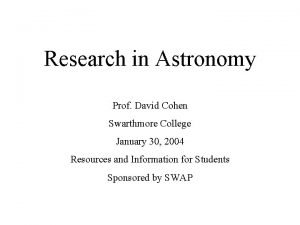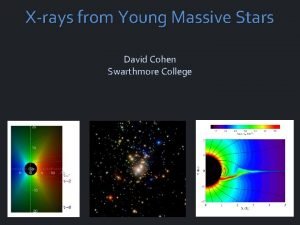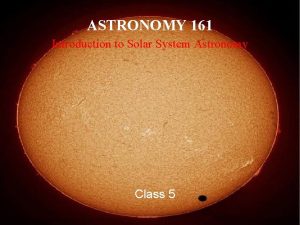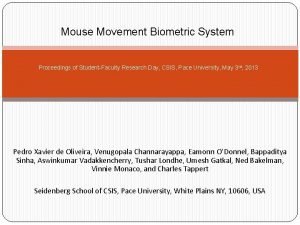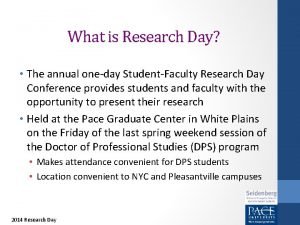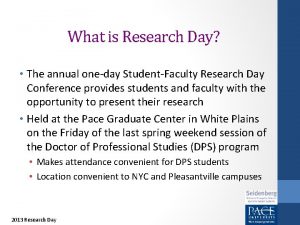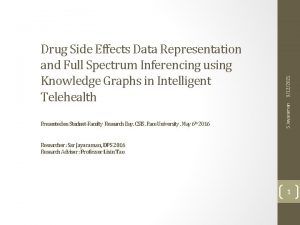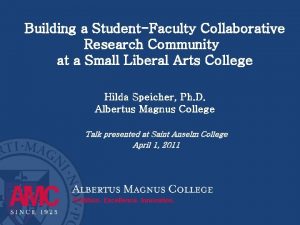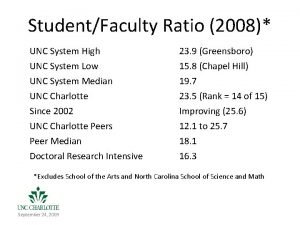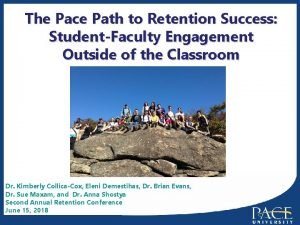StudentFaculty Astronomy Research at Swarthmore Ordoing astronomy research











- Slides: 11

Student-Faculty Astronomy Research at Swarthmore: Or…doing astronomy research when the Sun is up Professor David Cohen with Victoria Swisher (‘ 06), Micah Walter. Range (‘ 06), and Steve St. Vincent (‘ 07) More information about the astronomy program can be found at astro. swarthmore. edu and information about David’s student research group is available at astro. swarthmore. edu/~cohen/students. html

The Sproul Refractor is still used for public viewing… And although many important discoveries of 20 th Cen. Astronomy were made with this telescope, it is no longer suitable for modern research.

All astronomy research now takes place in the new, integrated Science Center We hope to build a modern 24 -inch reflecting telescope on the roof of the Science Center, on which we will perform some of our research and train students for careers in astronomy research.

We currently get all of our data from large observatories on places like Hawai’i (upper left) or from space telescopes, like Chandra (upper right)…and all the data analysis is done in our computer labs in the Science Center.

Astronomy at Swarthmore has traditionally focused on stars. An image of the Sun taken with an Xray telescope. Today that tradition is carried on by David Cohen, who studies massive stars and stellar xrays, and Eric Jensen, who studies star and planet formation. Physics professor Michael Brown studies magnetic phenomena in his laboratory, with applications to the Sun. At any given time, we have roughly half-a-dozen students working with us.

The main focus of my research is spectroscopy – analyzing the different colors of light emitted by stars – to figure out how these stars produce the very hot (millions of degree) gas that is required for the emission of x-rays.

The Sun’s x-ray emission is related to magnetic fields on its surface.

The X-rays and magnetic fields are associated with sunspots.

The SSX and its Soft X-ray Detector SXR Victoria Swisher (’ 06) is studying the x-ray emission from the hot, magnetized plasma in Prof. Michael Brown’s laboratory.

Prism. SPECT Spectra 5 e. V spectrum 30 e. V spectrum She is modeling the x-ray emission as a function of photon energy (think “color”) in order to determine the temperature of the hot, magnetized plasma in the experiment. Victoria’s research webpage has more information: astro. swarthmore. edu/~vswishe 1/

Micah Walter-Range (’ 06) and Steve St. Vincent (’ 07) are making computer models of the x-ray emitting plasma on some of the most massive and luminous stars in the Galaxy; like the star at the center of the Orion Nebula. Micah’s research page has more information: astro. swarthmore. edu/~mwalter 1/
 David cohen swarthmore
David cohen swarthmore David cohen swarthmore
David cohen swarthmore Swarthmore college store
Swarthmore college store Learning astronomy by doing astronomy activity 1 answers
Learning astronomy by doing astronomy activity 1 answers Learning astronomy by doing astronomy activity 7 answers
Learning astronomy by doing astronomy activity 7 answers Learning astronomy by doing astronomy activity 1 answers
Learning astronomy by doing astronomy activity 1 answers High point astronomy
High point astronomy Michigan state university astronomy
Michigan state university astronomy Stellar flux
Stellar flux Radio astronomy lectures
Radio astronomy lectures Solar system astronomy class
Solar system astronomy class Cosmic address order
Cosmic address order
